May 16, 2022
Indoor Ag Has An Energy Problem. Could Microgrids Be The Solution?
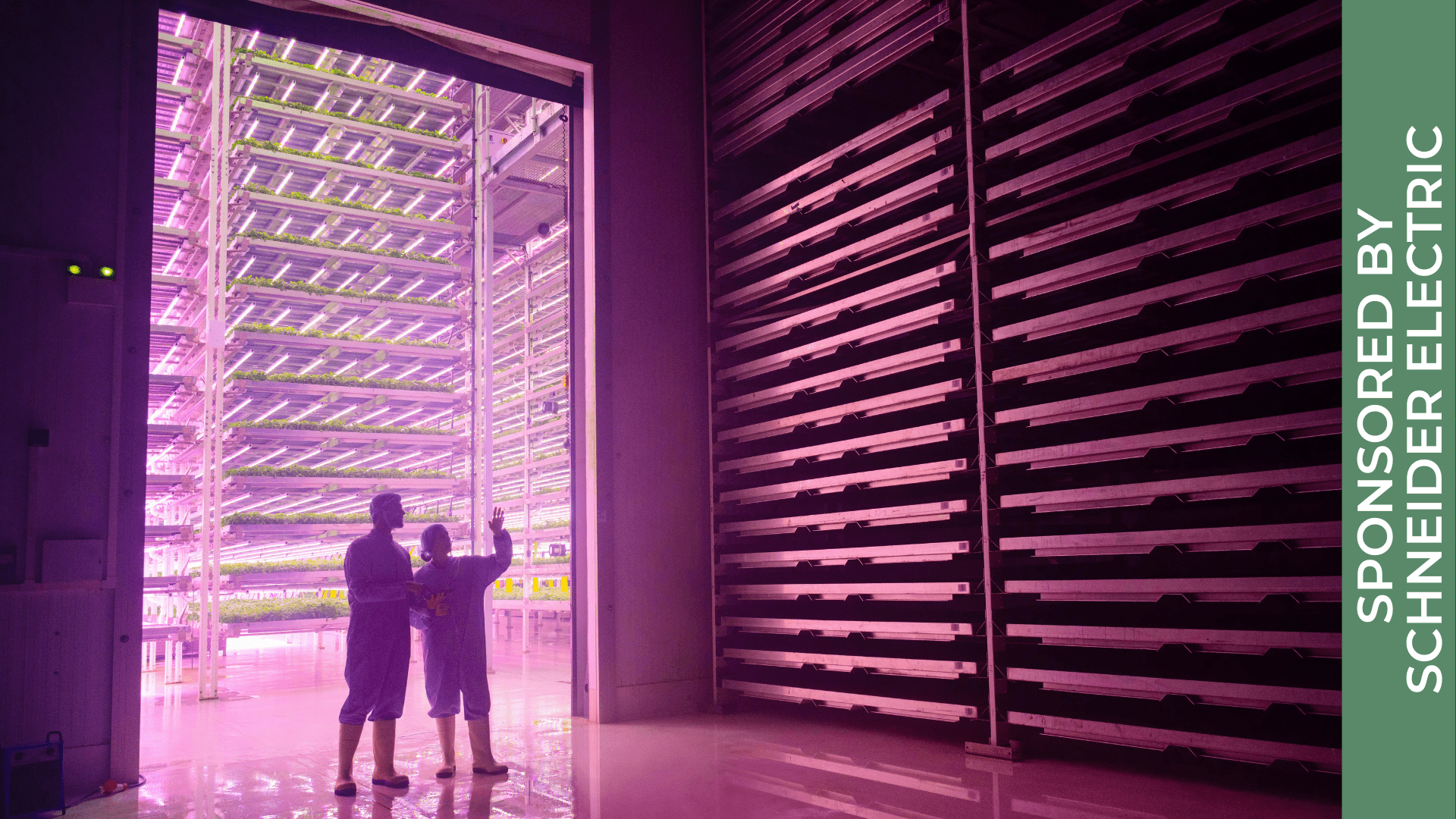
Editor’s Note: This is the second post of a three-part series in partnership with Schneider Electric (SE). It includes information derived from an interview between Agritecture and members of the SE team: Chris Evanich, Program Director for Energy as a Service, and Drew Gravitt, Director of Strategic Partnerships. Read the first post on “Decarbonizing The Food System With Smarter Energy Management” HERE.
By now, it’s been well established that indoor farming is a booming sector with huge potential for impact, but one dirty secret: its massive energy needs.
Agritecture and WayBeyond’s 2021 Global CEA Census found that vertical farms around the world reported using 38.8 kWh per kg of harvested crop, on average. While some performed much better than others, even a highly efficient vertical farm is likely to emit around 5 kg CO2 per kg of final product harvested.
Despite key benefits such as reduced water use, lack of pesticide use, avoidance of freshwater pollution, and shorter supply chains, the emission totals from vertical farms prevent the industry from being able to assert all-encompassing sustainability claims.
But the sustainability conundrum is just part of a bigger energy challenge.
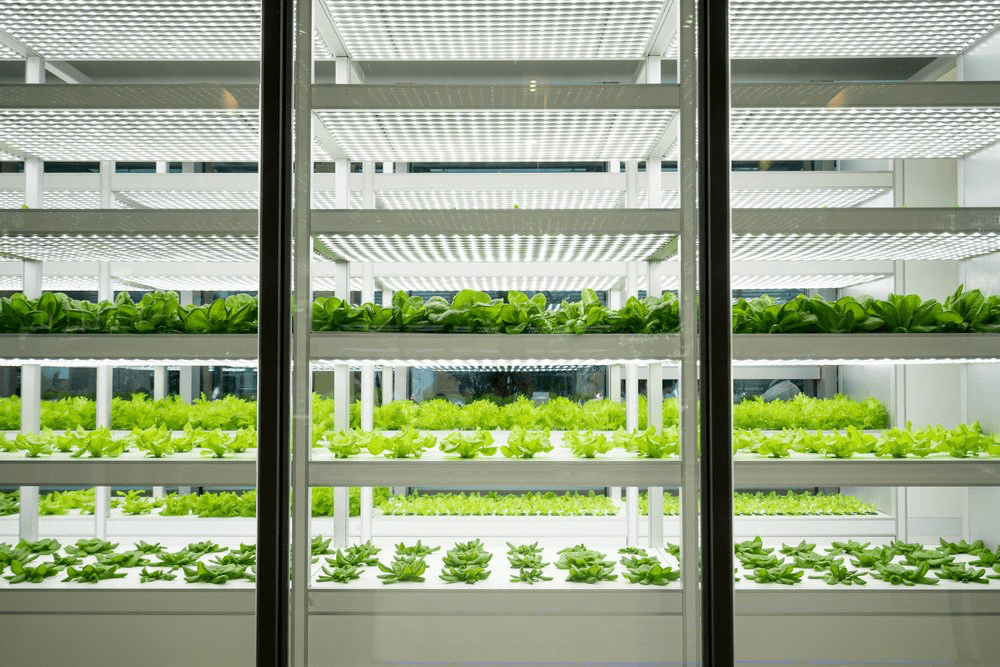
Resiliency is another key consideration when it comes to energy sourcing for controlled environment agriculture. According to Agritecture’s Lead Agronomist, David Ceaser, power outages can be detrimental to indoor farms - just a few hours of power being down can result in crop damage and increased disease potential. More serious outages can lead to a full crop loss.
“Plus, if the farm is automated, an outage can shut down all processes including seeding, materials movement in the facility (conveyor belts that carry flats of plants from planting areas to their grow location), harvesting, packaging equipment, and more,” says Ceaser.
“We all grasp the concept of ‘reliable’ power,” adds Chris Evanich of Schneider Electric. “But resiliency is a measure of your ability to recover from an event that disrupts the power to your facility. Reliability is easy to measure, but resiliency requires a careful analysis of all the ‘what ifs’ that you face today and could face in the future.”
We have also seen how climate change has increased the likelihood of extreme weather events and recent global crises have led to volatile prices for key utilities like gas and electricity.
With notoriously thin margins, food-producing companies will continue to struggle to meet their financial goals without better control of key inputs like energy.
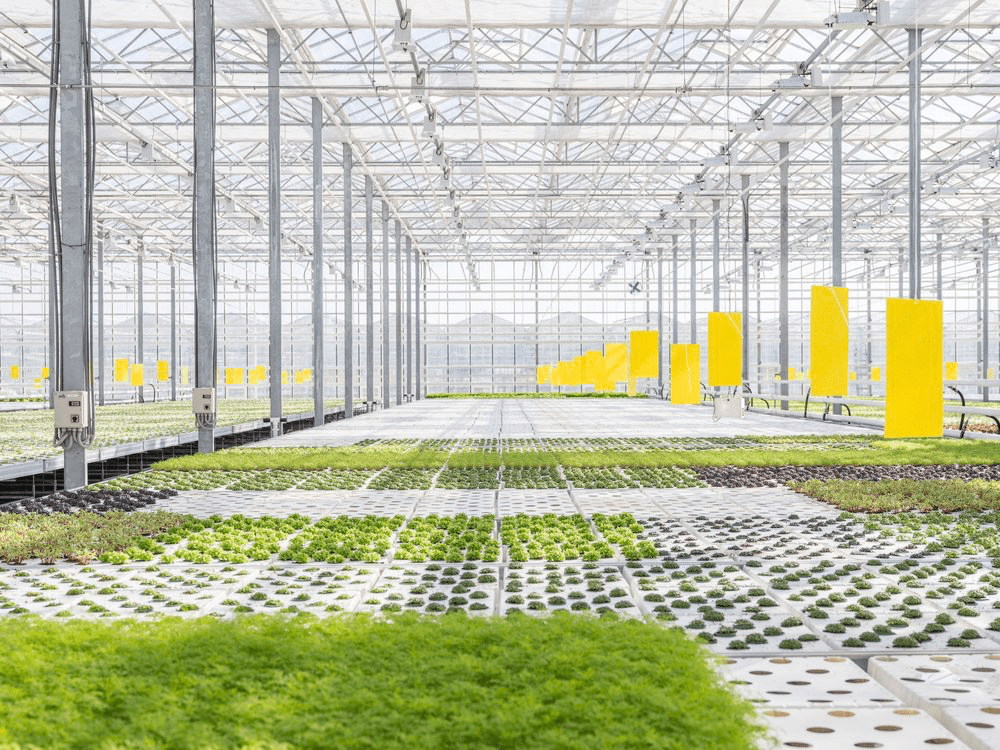
Evanich agrees. “Every company I talk to is focused on locking in low operating costs,” says Chris. And with energy comprising up to 60% of a controlled environment farm’s operating costs, it’s the issue that should get the most attention.
So why doesn’t it?
“I think the [CEA] industry is simply lacking a deep understanding of the energy market,” Evanich claims. He believes on-site generation is a low-hanging fruit that the US market in particular has not looked at seriously enough.
It’s a major reason why Schneider Electric has begun dedicating resources to help fill this knowledge and technology gap with two specific solutions.
The first is microgrid technology.
Drew Gravitt from Schneider Electric defines microgrids and explains their use case best in a recent blog post:
Microgrids are self-contained electrical networks that allow you to generate and use your own electricity at your indoor farming facility. Although this sounds like a traditional renewable electricity system, it’s not. What sets a microgrid apart from, for example, a solar array, is control of the system.
With a microgrid, you gain control over the energy you generate — deploying it when it’s needed most with the help of battery systems and intelligent software solutions. Unlike conventional grid-tied solar systems, these technologies can switch your facility’s power between the utility grid and the microgrid during an outage. This flexibility helps you avoid paying peak demand charges, participate in time-of-use rates, generate revenue via ancillary service programs, and maintain uptime during grid outages.
In considering Evanich’s reliability and resiliency distinction, microgrids check the resiliency piece where other clean energy solutions can’t.
But microgrids can come with their own set of challenges. The main challenge areas in deploying a microgrid are financial, technical, and operational.
The best way to combat these, Evanich suggests, is through Schneider’s second key solution: Energy as a Service.
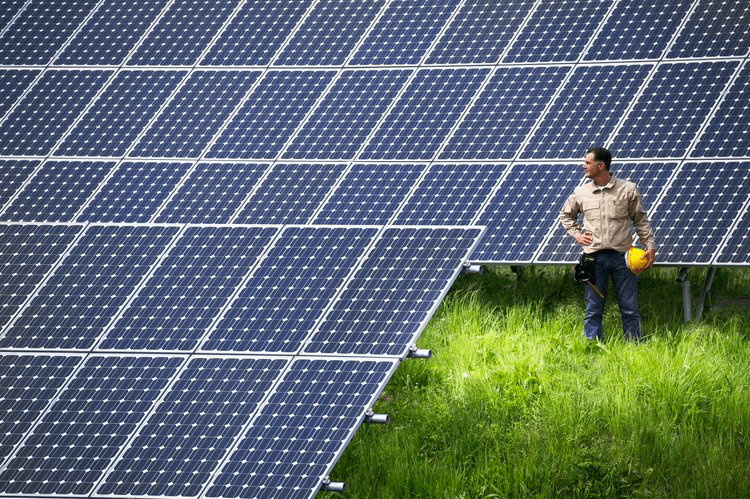
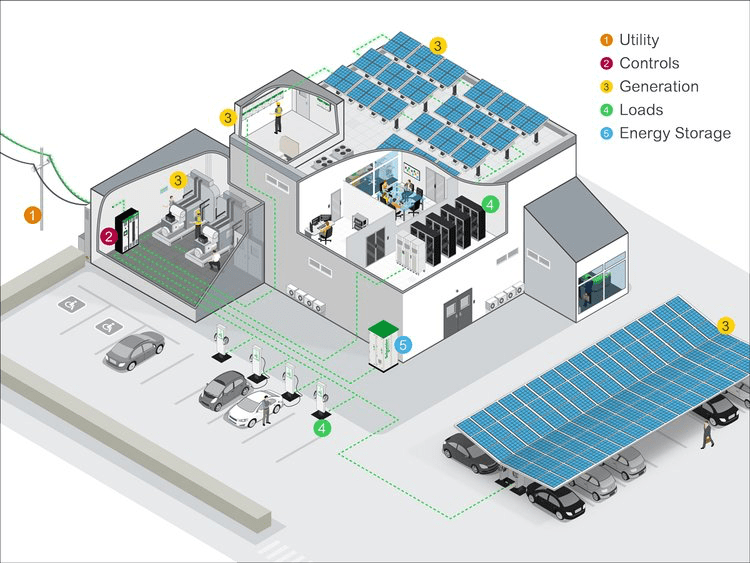
This Energy as a Service model allows companies to avoid a separate large capital expense (CapEx) during the project buildout phase, instead locking in a fixed monthly rate, which pays for all aspects of the microgrid system: the design, construction, operation, and maintenance of the system, plus the electrical infrastructure to get it connected to the farm.
Among the CEA community, this is critical, as indoor farms are already extremely expensive to build, and companies may prefer to reserve capital for their next facility. As such, many project developers may be unwilling to add more CapEx, even if it’s justified through long-term energy benefits. Schneider Electric recognizes this challenge and solves for it with their unique payback model.
Furthermore, customers “gain visibility and predictability into their energy costs, as well as into the carbon reductions, efficiency and reliability of the system,” says Evanich, distinguishing this model even further from standard utility providers.
“In a time of greater uncertainty, with most organizations facing capital constraints, Energy as a Service can help organizations bolster resiliency while accelerating their sustainability goals. ”
The Schneider Electric team shares two intriguing client success stories to back up their expertise.
Over the past few years, Schneider Electric has been working with Scale Microgrid Solutions, a vertically integrated distributed energy and microgrid platform, to build hybrid microgrid systems for indoor vertical farming company Bowery Farming and robotic indoor farming pioneer Fifth Season.

Bowery’s New Jersey vertical farm uses “distributed energy resources (DER), including Schneider Electric's lithium-ion battery energy storage system (BESS) interconnected in a behind-the-meter configuration.” Here, Schneider Electric's EcoStruxure Microgrid Advisor (EMA), a cloud-connected, demand-side energy management software platform, will play a key role in optimizing the system's performance.
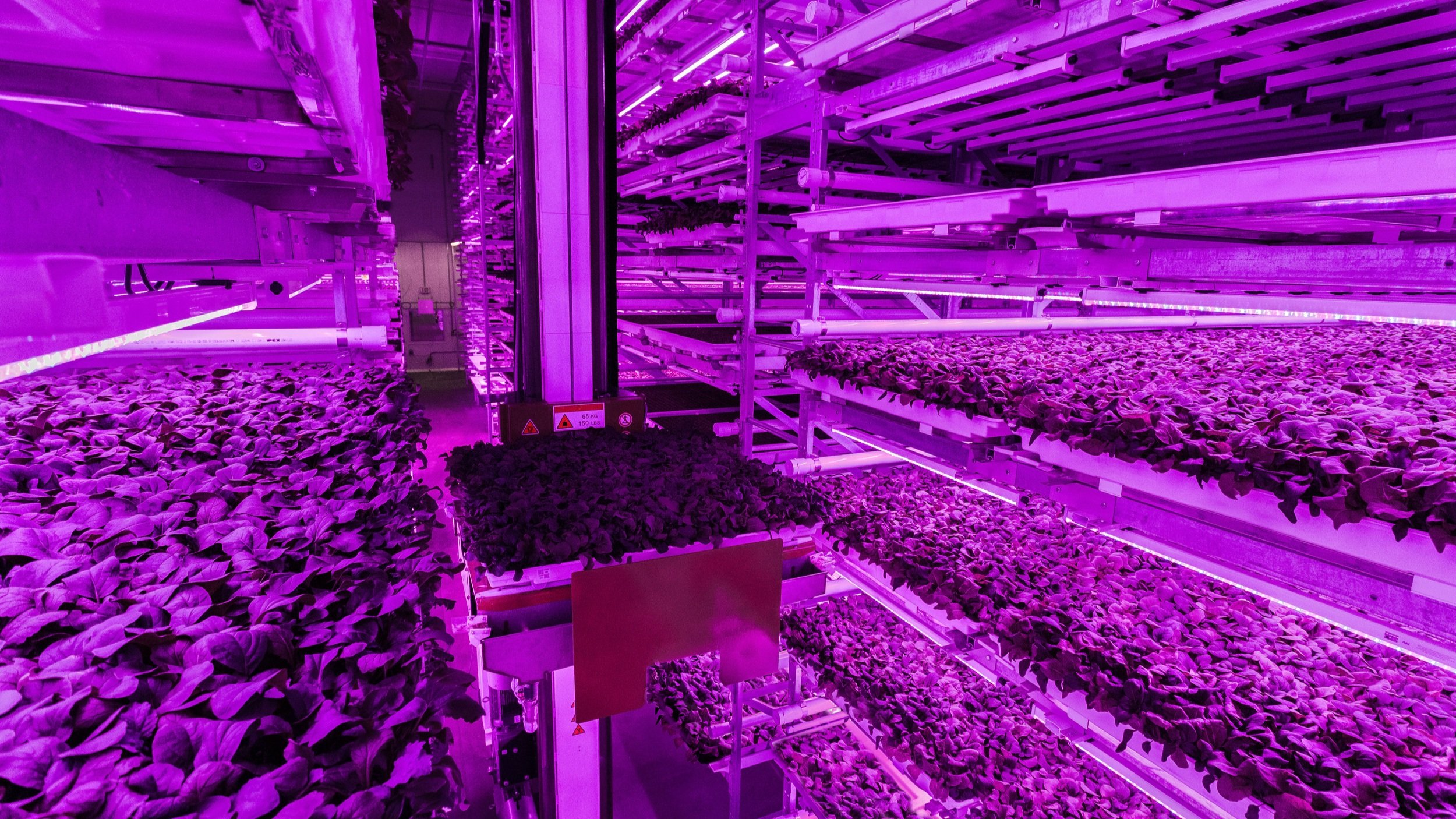
In the case of Fifth Season, “the microgrid leverages Schneider Electric battery storage, switchgear, and advanced controls technology to deliver sustainable and dynamic energy management for Fifth Season's newest, highly autonomous vertical farm in Pittsburgh, Pennsylvania.” This will enable the vertical farm to achieve long term economic and environmental sustainability, while still pioneering in their mission to deliver healthier, fresher greens to local communities.


